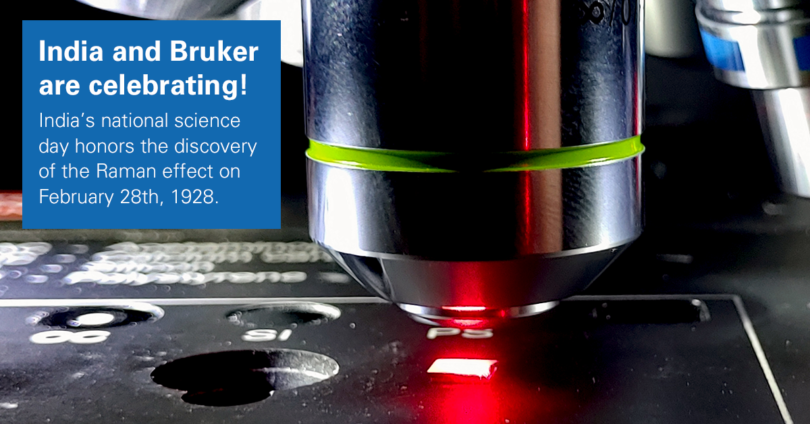Rarely has any spectroscopic technique been so closely linked to the originator of its beginnings as Raman spectroscopy. By discovering the Raman effect in 1928, Sir C.V. Raman started many developments that lead to breakthrough discoveries in recent years.
This year, India honors his memory by celebrating women in science.
What is the Raman Effect?
When photons (light) hit matter most of the scattered light is unchanged in its wavelength. For example, if you look at the light of a laser that is scattered on an object, the scattered light apparently has the same color. This is called Rayleigh scattering and can be observed in our title image.
However, inelastic scattering processes can occur, which result in emission of light of a different wavelength. This usually happens in relation to molecular vibrations. For the discovery of this scattering phenomenon, which was predicted by Adolf Smekal in 1923, Sir C.V. Raman was awarded the Nobel Prize in 1930.
Foundation of Raman Spectroscopy
With the discovery and understanding of the Raman effect the door was opened into a new way of spectroscopy. But it took until the discovery of the laser for Raman to really take of.
In Raman spectroscopy, the sample is illuminated by laser light, and a portion of the scattered light is analyzed in a spectrograph, either using dispersive or FT-technology. The Raman effect causes the wavelength of the incident laser light to change, mostly depending on molecular vibrations.
The scattered light now contains a lot of chemical information about the investigated sample. Therefore, a Raman spectrum can be used for the identification of unknown compound and is also valuable for many other applications.

Women working with Raman
As the National Science Day in India is dedicated to women in science, we would like to share two examples, in which Raman (micro) spectroscopy is used in current research by women.
The workgroup of Professor Anna Fischer from the Albert-Ludwigs-Universität Freiburg uses the SENTERRA II Raman Microscope to discover new nanomaterials and enhance their properties. They study electrocatalysts and photoelectrical water splitting.
Professor Darby Dyar at the Department of Astronomy at Mount Holyoke uses Bruker’s BRAVO handheld Raman spectrometer to analyze and characterize minerals and their contents. In addition, the BRAVO is a teaching tool to improve the understanding of minerals and spectroscopy in interactive classes. Her more recent studies focus on predicting mineral compositions by multivariate Raman analysis (and also features the SENTERRA).
You’ve got other questions? Don’t hesitate and contact us through our website or take a look at our FTIR and Raman applications on this blog!
Bruker is the innovation leader in vibrational spectroscopy and offers infrared as well as Raman (micro) spectrometers. We love talking to our customers and always try to find the best solution to the analytical task at hand.








